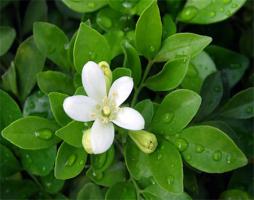Should You Stake Newly Planted Trees?
Planting trees is a great way to improve the environment and beautify the surroundings. However, it's important to properly care for them to ensure their growth and survival. One question that often comes up is whether or not to stake newly planted trees. Let's explore the pros and cons to help you make an informed decision.
Pros of Staking Newly Planted Trees
Staking newly planted trees has some advantages, including:
Support: Stakes can provide support for the tree until its roots establish and it can stand on its own.
Straightness: Staking can help keep the tree straight as it grows and prevent it from leaning or bending.
Protection: Stakes can protect the tree from strong winds or heavy rains that could uproot it.
Visibility: Stakes can make the tree more visible, which can be helpful in areas with foot or vehicle traffic.
Cons of Staking Newly Planted Trees
On the other hand, staking newly planted trees can also have some drawbacks:
Dependency: Trees can become dependent on support and may not develop strong roots if staked for too long.
Damage: Staking can damage the tree or bark if not done properly.
Limited Movement: Staked trees may have limited movement, which can affect their ability to sway and grow stronger.
When to Stake Newly Planted Trees
So, when should you stake newly planted trees? Here are some considerations:
Wind and Weather: If the area is prone to strong winds or heavy rains, staking may be necessary to protect the tree.
Size of Tree: Larger, heavier trees may need staking to prevent them from toppling over while their roots establish.
Soil Conditions: Trees planted in loose or sandy soil may need staking to help support them until their roots grow deeper.
Location: Trees planted in areas with high foot or vehicle traffic may need staking to make them more visible and prevent accidental damage.
How to Stake Newly Planted Trees
If staking is necessary, it's important to do it properly to minimize damage and maximize support. Here are some tips:
Stake Material: Use sturdy, flexible materials such as wire, nylon or rubber ties to avoid damage to the tree. Avoid using string or anything that can cut into the bark.
Stake Placement: Drive the stakes into the ground at a 45-degree angle away from the tree, with at least two stakes for stability.
Stake Height: Secure the stakes at a height where the tree trunk can move a little in the wind, but not enough to uproot it.
Stake Removal: Remove the stakes after one to two years to prevent the tree from becoming dependent on them and to promote proper root development. Check the tree regularly to ensure it's stable on its own.
Conclusion
In conclusion, staking newly planted trees can be helpful in certain circumstances but it's not always necessary. Consider factors such as weather, soil conditions, and the size and location of the tree before deciding whether or not to stake. If staking is necessary, be sure to do it properly and remove the stakes after one to two years to promote strong root development. With proper care, newly planted trees can thrive and beautify the environment for years to come.

 how many times do yo...
how many times do yo... how many planted tre...
how many planted tre... how many pine trees ...
how many pine trees ... how many pecan trees...
how many pecan trees... how many plants comp...
how many plants comp... how many plants can ...
how many plants can ... how many plants and ...
how many plants and ... how many pepper plan...
how many pepper plan...





























